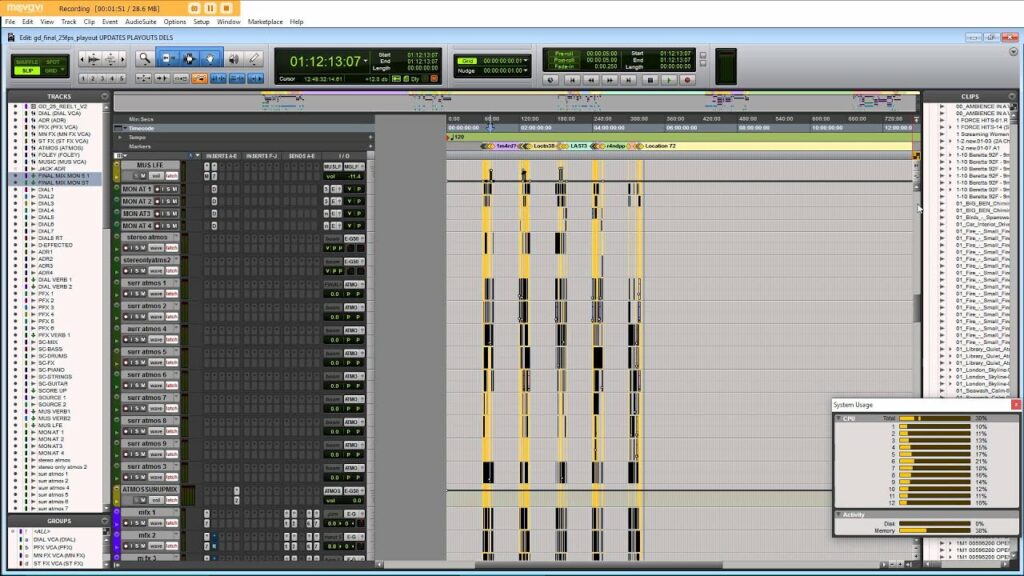Mastering Pro Tools on Windows: A Comprehensive Guide

Introduction: Pro Tools stands as a cornerstone in the realm of digital audio workstations (DAWs), offering professionals and enthusiasts alike a robust platform for recording, editing, mixing, and mastering audio. With its extensive feature set and industry-standard status, Pro Tools is a go-to choice for music production, post-production, and sound design. For Windows users, harnessing the power of Pro Tools opens up a world of creative possibilities. In this comprehensive guide, we’ll delve into the intricacies of using Pro Tools on Windows, from installation to advanced techniques, empowering you to maximize your potential as an audio producer.
Chapter 1: Understanding Pro Tools Versions and System Requirements Before diving into Pro Tools on Windows, it’s essential to grasp the different versions available and their respective system requirements. Pro Tools offers various editions tailored to different user needs, ranging from the entry-level Pro Tools | First to the professional-grade Pro Tools | Ultimate. Each version has specific hardware and software requirements, including processor speed, RAM, and operating system compatibility. Familiarizing yourself with these requirements ensures a smooth installation process and optimal performance on your Windows system.
Chapter 2: Installing Pro Tools on Windows Installing Pro Tools on Windows is a straightforward process, but it requires attention to detail to ensure success. Begin by downloading the appropriate installer from the Avid website, taking care to select the version compatible with your Windows operating system and hardware configuration. Follow the on-screen instructions to complete the installation, making sure to customize installation options as needed. During the installation process, you’ll have the opportunity to select additional components, such as bundled plugins and virtual instruments, to enhance your Pro Tools experience.
Chapter 3: Configuring Pro Tools Preferences After installing Pro Tools on Windows, it’s crucial to configure preferences to optimize performance and tailor the software to your workflow preferences. Access the preferences menu from the Setup dropdown menu, where you can adjust settings related to audio playback and recording, session management, keyboard shortcuts, and more. Pay particular attention to hardware settings, ensuring that Pro Tools recognizes and utilizes your audio interface and MIDI controllers effectively. By customizing preferences to suit your needs, you can streamline your workflow and maximize productivity in Pro Tools on Windows.
Chapter 4: Navigating the Pro Tools Interface The Pro Tools interface may appear daunting to newcomers, but mastering its layout and functionality is key to unlocking its full potential. Familiarize yourself with the various windows and panels, such as the Edit window for audio and MIDI editing, the Mix window for mixing and signal processing, and the Transport window for controlling playback and recording. Learn how to navigate sessions, create and organize tracks, and utilize essential tools like the Smart Tool and Selector. By becoming proficient in navigating the Pro Tools interface, you’ll streamline your workflow and work more efficiently on Windows.
Chapter 5: Recording and Editing in Pro Tools Recording and editing are fundamental aspects of audio production, and Pro Tools offers a comprehensive set of tools and features for these tasks on Windows. Learn how to set up audio and MIDI tracks for recording, adjust input levels, and monitor signal flow in real-time. Explore editing techniques such as cutting, copying, and pasting audio, as well as using tools like Elastic Audio and Beat Detective for time and pitch manipulation. Familiarize yourself with keyboard shortcuts and workflow optimizations to speed up your recording and editing process in Pro Tools on Windows.
Chapter 6: Mixing and Mastering in Pro Tools Mixing and mastering are where Pro Tools truly shines, offering unparalleled flexibility and precision for shaping and sculpting audio on Windows. Dive into the Mix window to adjust levels, pan positions, and plugin settings for each track in your session. Explore advanced mixing techniques such as automation, bussing, and parallel processing to add depth and dimension to your mixes. When mastering, focus on fine-tuning dynamics, EQ, and spatial effects to achieve a polished and professional sound. Experiment with different mastering chains and reference tracks to refine your skills and develop your signature sound in Pro Tools on Windows.
Chapter 7: Collaboration and Workflow Optimization Collaboration and workflow optimization are crucial aspects of modern audio production, and Pro Tools offers several features to facilitate these processes on Windows. Learn how to share sessions with collaborators using the Avid Cloud Collaboration platform, allowing multiple users to work on the same project simultaneously from different locations. Explore workflow optimizations such as session templates, custom keyboard shortcuts, and third-party integrations to streamline your workflow and enhance productivity in Pro Tools on Windows. By leveraging collaboration tools and workflow optimizations, you’ll work more efficiently and effectively, whether you’re collaborating with a team or working solo on Windows.
Chapter 8: Advanced Techniques and Tips Beyond the basics, Pro Tools offers a wealth of advanced techniques and features to explore on Windows. Delve into topics such as advanced routing and signal processing, surround sound mixing, and integrating external hardware and software instruments. Experiment with advanced editing techniques like time-stretching, pitch-shifting, and spectral editing to push the boundaries of your creativity in Pro Tools on Windows. Stay updated on industry trends and best practices, and continue to expand your knowledge and skills through online tutorials, forums, and professional development opportunities. By mastering advanced techniques and staying abreast of industry developments, you’ll elevate your audio production skills to new heights on Windows.
Conclusion: Pro Tools is a powerful and versatile tool for audio production, and its availability on Windows opens up new possibilities for musicians, producers, and sound engineers alike. By following the guidelines outlined in this comprehensive guide and dedicating yourself to continuous learning and practice, you’ll unlock the full potential of Pro Tools on Windows and realize your creative vision with confidence and precision. Whether you’re recording, editing, mixing, or mastering, Pro Tools on Windows provides the tools and flexibility you need to bring your audio projects to life and achieve professional-quality results.




